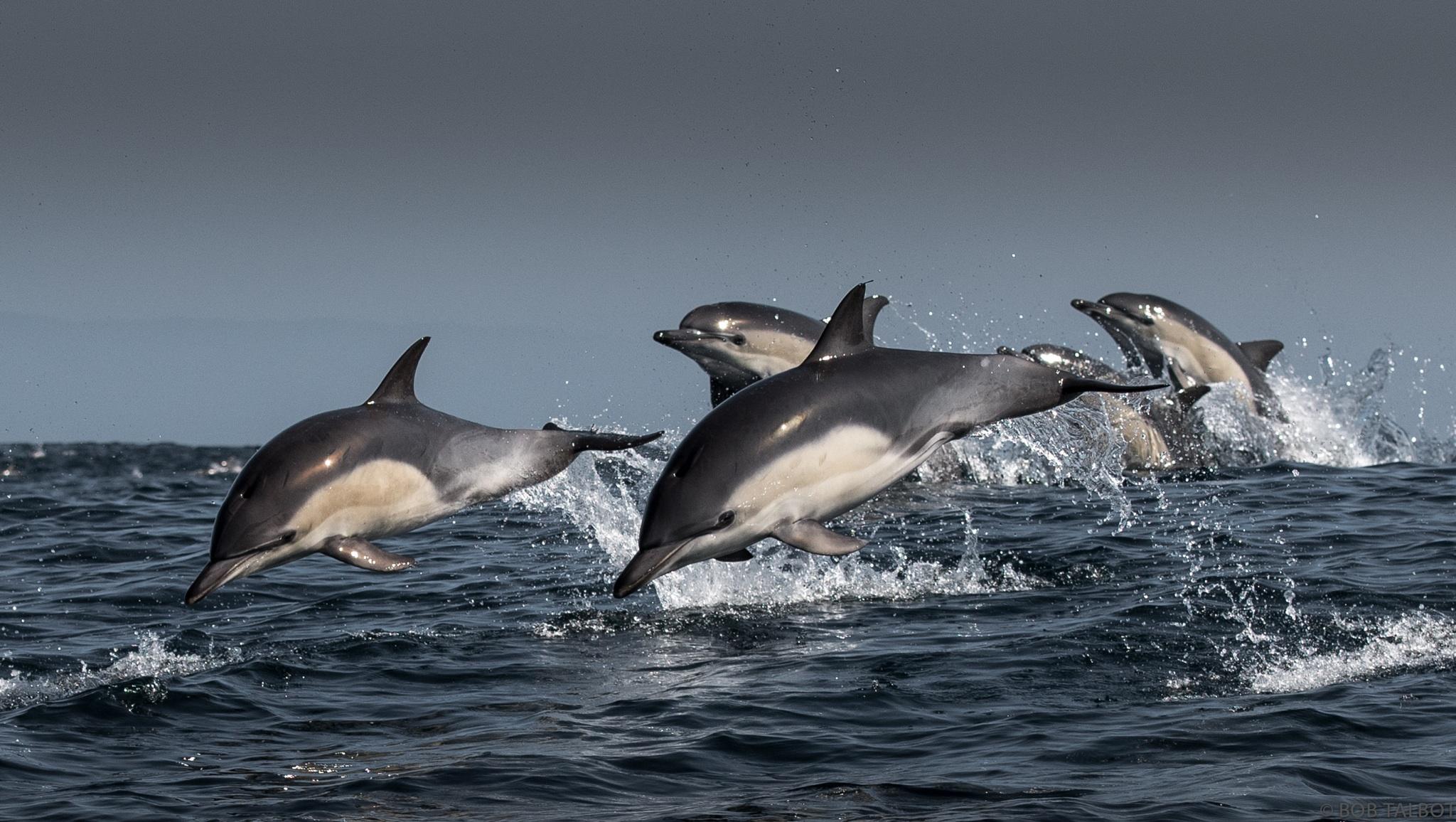Two peas in a pod? How about 1,000 dolphins in a pod? A pod is a group of dolphins that travels together. But why do dolphins do this?
Being mammals, dolphins rely on social learning and relationships to survive. In pods they play, babysit, alert each other to danger like predators, practice courtship, and hunt together. In fact, traveling in a group compensates for their smaller body size. Additionally, dolphins sleep with one half of their brain at a time while the other half remains alert and active; traveling in a group allows dolphins to rest while still having awareness of the environment around them through the watch of other conspecifics.
Social order in a pod is created and maintained through communication of all forms. Whether verbal through whistles, clicks, and squeaks produced from their blowholes, or nonverbal cues such as eye contact, play, or synchronized swimming, dolphins rely on information from others for survival and security. Scientists believe each dolphin’s mother assigns it a unique signature whistle at birth, sort of like a name, to help with locating each other in larger group settings.
Most pods range from two to 30 individuals, but on some occasions superpods or megapods form, which contain hundreds or even thousands of dolphins. Superpods occur when multiple groups of dolphins converge during times of mating or hunting opportunities, though these giant groupings don’t last very long and are very rare to spot. Once activity has died down, dolphins will return back to their smaller pods.
The three types of pods we observe across dolphin species are maternal/nursery pods; juvenile pods; and bachelor pods. Maternal/nursery pods include adult females and their calves ranging in age from newborn to about three years old; this social structure allows mothers to babysit while the others hunt and allows calves to learn the skills they need before going off on their own. Juvenile pods include both young males and females that leave or are kicked out of their maternal pods and travel together. The advantage to their newfound independence is the opportunity to join new social groups, which can help create genetic diversity. Bachelor pods are small groups of two to four adult males that become closely bonded. These close social relationships allow for mating, territorial, and hunting behavior, and bachelor pods will only rarely interact with other social groupings.


